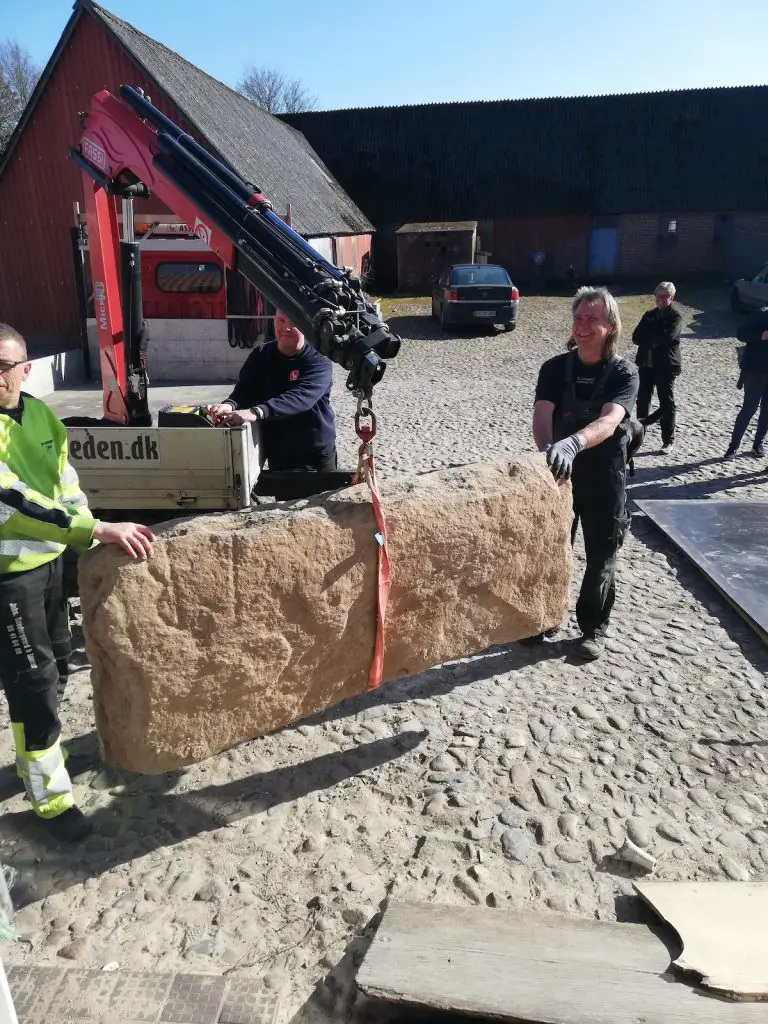A typical home renovation turned into an extraordinary archaeological discovery for a couple in Denmark. Lene Brandt and her husband, Anders Nielsen, stumbled across a massive stone, weighing 2,000 pounds, carved with ancient runes while renovating their kitchen.
The discovery occurred in the village of Mosekær, where the couple was removing the old linoleum from their kitchen floors. What they found beneath was not just an irregularly shaped rock but a massive piece of history.
A Brief History of Vikings and Runes
The Vikings, known for their seafaring exploits and martial prowess, were a fascinating group of people who hailed from the Scandinavian regions of Europe – Denmark, Norway, and Sweden. The Viking Age, typically dated from around 800 A.D. to the 11th century, was an era marked by expansion, exploration, and cultural exchange.
Denmark played a significant role during the Viking Age. It was home to many powerful Viking leaders and served as a strategic location for trade and exploration. From here, Viking ships set sail to various parts of Europe, Asia, and even North America, leaving a lasting impact on the regions they visited.
The Significance of Runes
One of the most distinctive elements of Viking culture was their unique system of writing known as runes. Runes were not just letters, but symbols imbued with mystical significance. They were used for various purposes, from everyday communication to religious rituals and magic.
Runestones were often used by ancient Vikings to commemorate events, mark territories, or honor deceased loved ones. The text on these stones provides invaluable insights into the socio-political climate of the era, shedding light on historical events that might have otherwise been forgotten.
The runic alphabet, or ‘futhark’, was used across the Viking world, but there were regional variations. In Denmark, the earliest runic inscriptions date back to the 3rd century AD, with the older futhark consisting of 24 characters. By the Viking Age, this had evolved into the younger futhark with 16 runes.
Runestones, like the one discovered in Randers, are among the most significant archaeological remnants of the Viking Age. These stones, often raised as memorials or markers, were engraved with runic inscriptions. The messages on these stones provide valuable insights into the lives, beliefs, and societal structures of the Vikings.

The Discovery of the Rune Stone
Denmark is renowned for its rich runic heritage. The country boasts several rune stones, each narrating a unique tale of the past. The Jelling Stones, for instance, erected by King Gorm the Old and his son Harald Bluetooth, are famous for their intricate carvings and historical significance.
As soon as they realized what they had uncovered, Lene Brandt and her husband, Anders Nielsen immediately contacted the culture-historical Museum Østjylland, which confirmed that the stone was indeed a runestone – a type of raised stone commonly associated with the Viking Age.
The stone, measuring two meters in length and 80 centimetres in width is the 44th runestones discovered in the area, but it is being lauded as the most historically significant. Five runes are carved into the stone’s surface, reading “aft Bi,” which can be translated as “after B.”
Experts from the Museum have come to the conclusion that this recent find is one of the oldest runestones ever found in Denmark, and they have declared it a national treasure, which means that it is now protected by law.

